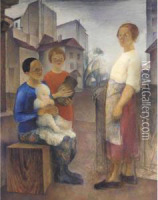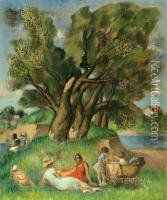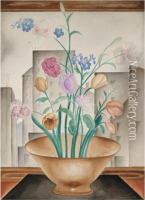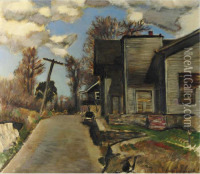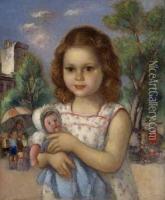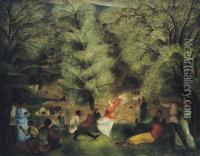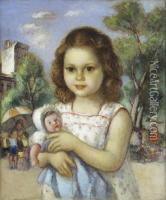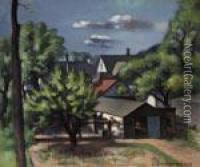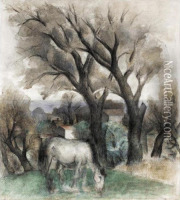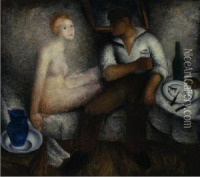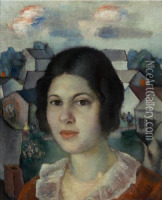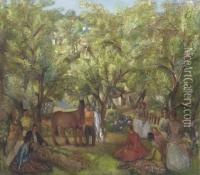Simkha Simkhovitch Paintings
Simkha Simkhovitch, born in 1885 in Russia, was a painter known for his ability to blend traditional Russian folk themes with a more modern artistic sensibility. He was part of a generation of artists who were grappling with the rapid changes in society and art during the late 19th and early 20th centuries. Simkhovitch's early education was in Russia, but he sought to expand his artistic horizons and thus moved to Western Europe to immerse himself in the burgeoning art scene.
In Europe, Simkhovitch studied in Paris, which at the time was the center of the art world. There, he was exposed to various art movements such as Impressionism, Post-Impressionism, and the early stages of Modernism. He absorbed these influences and began to incorporate them into his own work, which often focused on the lives of peasants and rural communities, a theme that reflected his own background and interests.
Simkhovitch emigrated to the United States in the early 20th century, where he continued to develop his craft. In America, his work began to receive recognition, and he became part of the community of artists who were exploring new ways of expressing the American experience through art. His paintings often depicted the simplicity and hardship of rural life, but he did so with a warmth and a vibrancy that resonated with audiences.
Throughout his career, Simkhovitch exhibited his works in various galleries and shows, and he was also involved in art education, teaching at several institutions. His style remained deeply personal and distinct, with a rich use of color and a loose, expressive brushwork that conveyed the emotional depth of his subjects.
Simkhovitch's contribution to art lies in his ability to convey the spirit of his time through a lens that was both nostalgic and forward-looking. His paintings are a testament to the cultural and social transitions of his era, reflecting the changes that were occurring in the world around him. Simkha Simkhovitch passed away in 1949, leaving behind a body of work that continues to be appreciated for its historical significance and artistic beauty.
